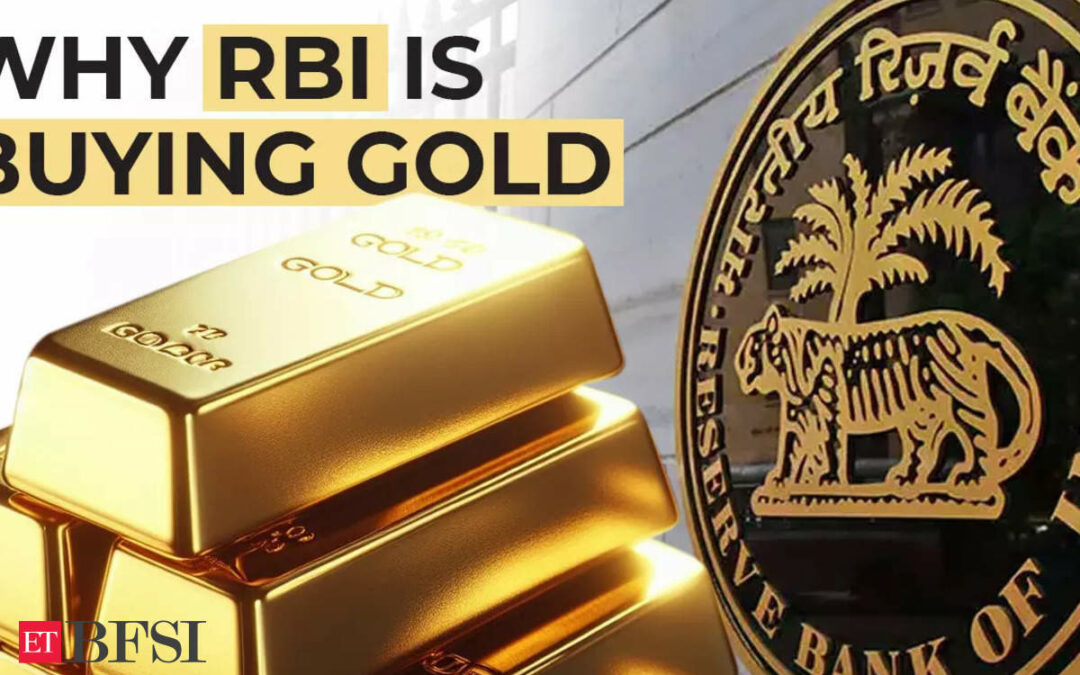The Reserve Bank of India (RBI) has increased its gold purchases to enhance the diversity of its foreign exchange reserves amid fluctuations in the US dollar. The surge in the value of outstanding gold reserves accounted for more than 80% of the nearly $3-billion rise in forex reserves, which reached a record $648.5 billion as of April 5.
According to an ET report, during January-February of this year, the RBI acquired 0.43 million troy ounces, equivalent to around 13.3 tonnes of gold, from the market. This represents over 80% of the total gold purchases made by the central bank in 2023, which amounted to 0.52 million troy ounces.
We are accumulating gold reserves, and the data is periodically released, stated RBI Governor Shaktikanta Das during the post-policy media conference on April 5. We evaluate all aspects while increasing the reserves and then make a decision, he had said.
RBI has been consistently acquiring gold from the market since December 2017 as part of its strategy to diversify its foreign currency assets and mitigate risks associated with inflation and foreign currencies. As of February 2024, the RBI’s gold reserves have increased to 26.26 million troy ounces from 17.94 million troy ounces in December 2017.
Gold is considered a stable asset during times of uncertainty and political upheaval. Madan Sabnavis, chief economist at Bank of Baroda, was quoted as saying that the rationale behind purchasing gold is both political and economic. While the US dollar has historically been a stable currency, its reliability has diminished following the Ukraine conflict, he said. Currently, US bonds are at their highest yields, indicating a weakened dollar compared to its past strength, despite being the dominant currency in global trade, he said.
The surge in international gold prices, rising over 7% since February, has contributed to the increase in the value of gold reserves. The value of gold reserves, linked to prices at the London Bullion Exchange, is recalculated weekly. Currently, gold prices are surpassing $2300 per troy ounce.
Also Read | Steadily climbing returns from FCNR! Overseas Indians send home record $29 billion in remittances
Furthermore, there’s a noticeable decline in the confidence in dollar assets among central banks, the report said. According to US Treasury Department data, non-US central banks’ holdings of US treasury bonds have dropped from 50.1% in January 2023 to 47.2% as of January 2024.
Anubhuti Sahay, head of South Asia Economic Research at Standard Chartered Bank, noted, “It makes a lot of sense (to invest in gold), given the increased volatility in the FX market, elevated interest rates in the US, and, of course, also as the central banks in each economy would like to diversify the asset classes in which they are parking their reserves.”
The total gold reserves for India are expected to rise due to the overall increase in reserves and the appreciation of gold prices. However, central banks consider various factors beyond just valuation, with diversification of reserves being a significant consideration, she said.
Also Read | Mini-Goldilocks moment! Why Motilal Oswal thinks India is big, bold and blazing
The percentage of gold in the total foreign exchange reserves, in terms of USD value, rose from approximately 7.9% in early April 2023 to around 8.41% in early April 2024.
However, the central bank only retains a portion of the reserves domestically. As per the latest Report on Foreign Exchange reserves, out of a total of 800.79 metric tonnes of gold (including gold deposits of 39.89 metric tonnes), the Reserve Bank held 388.06 metric tonnes of gold overseas in custody with Bank of England and Bank of International Settlements (BIS). Additionally, 372.84 metric tonnes of gold are held domestically, as of September 2023.











